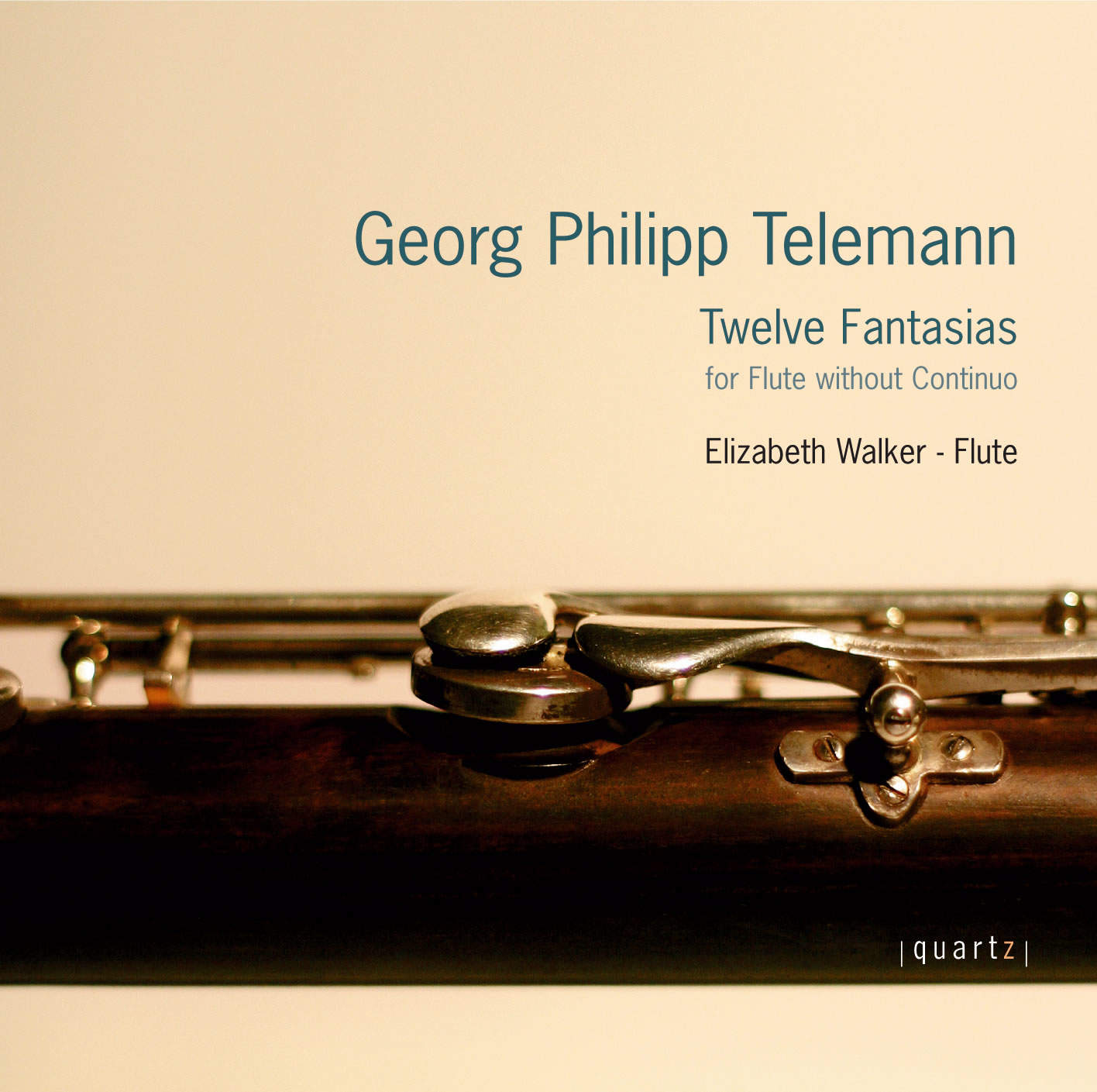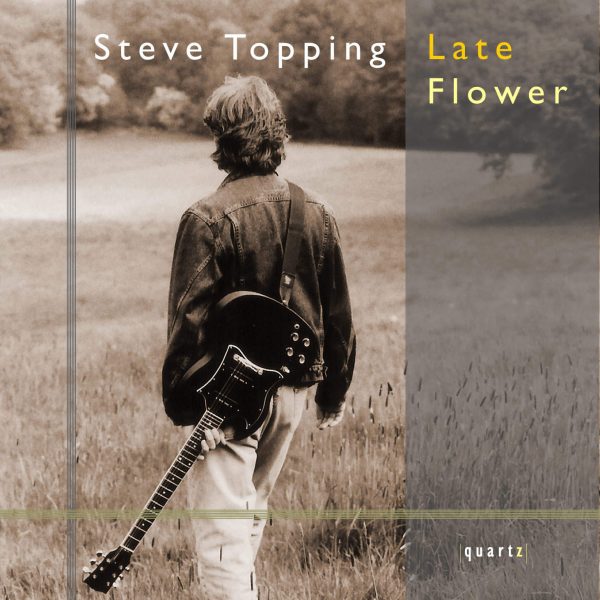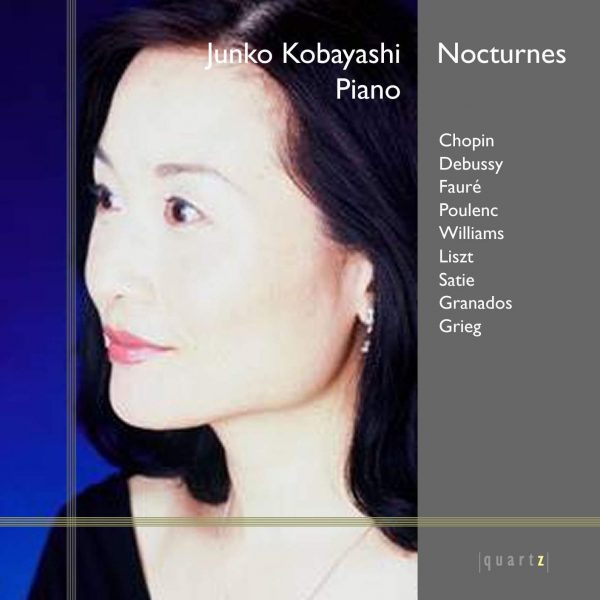Telemann – Twelve Fantasias for Solo Flute
Price range: £4.99 through £11.99
Georg Philipp Telemann
Twelve Fantasias for Flute without Continuo
Elizabeth Walker, flute
Fantasia No 1 in A major
Fantasia No 2 in A minor
Fantasia No 3 in B minor
Fantasia No 4 in B major
Fantasia No 5 in C major
Fantasia No 6 in D minor
Fantasia No 7 in D major
Fantasia No 8 in E minor
Fantasia No 9 in E major
Fantasia No 10 in F sharp Minor
Fantasia No 11 in G major
Fantasia No 12 in G minor
About This Recording
“A Lulli is renowned; Corelli one may praise, but Telemann alone has above mere fame been raised.” JOHANN MATTHESON, 1740
The solo Fantasias represent inventive, original late baroque masterpieces for flute, designed for performance and instruction. There are virtually no other works written for solo unaccompanied
flute “senza basso” that one can compare to the Fantasias. The bass line is considered to be the prominent line in baroque music, the melody being very much pegged above a solid, firm
harmonic bass line; thus a typical baroque flute sonata would indicate two instruments to emphasis this line, a cello and a harpsichord. The challenge is clear therefore, how can the lone
flautist successfully produce an expressive melodic line at the same time as solidly reinforcing this vital bass line, so especially important in music from this era? With the skill of Telemann’s
writing coupled with the instruction from contemporary flautists such as J.J. Quantz (1697- 1773) author of Essay of a Method for Playing the Transverse Flute (1752), these movements come to
life not only because of the challenge that they represent, but as the complete works of art that they undoubtedly are.
Much like the solo violoncello suites by J.S. Bach, the unaccompanied Fantasias by Telemann stand as masterpieces of baroque invention, showing a variety of styles and influences in ever
changing moods and tempos. There is no format to follow, some have long expressive first movements with themes that recur later, and others start swiftly and robustly but with abrupt changes of style throughout. What is consistent, is a strong harmonic frame work that vitally underpins the masterful melodies; however, clear influences can also be detected, such as the most sonorous, almost operatic melodies, possibly inspired by friend and colleague, G.P. Handel; and touches of French baroque style that can be strongly felt in the Fantasia no. 7 Alla francese and in many of the final dance movements. A six month period in Poland’s “true barbaric beauty” is echoed in the peasant dance movements, such as the presto in Fantasia no. 4.
Clearly Telemann’s enormous musical output brought him great fame in his lifetime, along with his eagerness to publish much of his music, but he was also a remarkably innovative educationalist.
Early in his career he was controversially encouraging and employing student singers and musicians in Leipzig. He founded a 40-member student collegium musicum early in his career in this city, and also in his subsequent posts in Frankfurt and Hamburg. These popular public concerts were a great opportunity for chamber works to be performed by students. In his autobiography of 1718, Telemann wrote: “Although this collegium was made up of mere music
students, some forty strong, it was nonetheless pleasant to hear…there was seldom an instrument which was not represented”.
I have chosen to perform the Fantasias on a wooden flute (Harry Seeley, British Flutemakers Guild 1960s), which is perhaps a surprising decision given my extensive training and performing
career on early flutes, but I became convinced that the instrument’s exceptional tonal depth and flexibility would produce the perfect stylistic performance of these pedagogic movements that I
was looking for.
Have I compromised the early flute or indeed the modern flute in this endeavour? Do such distinctions exist? Telemann would have a view of course! When tackling this baroque repertoire on a modern flute, it is clear that one should endeavour to recreate the style in which the composer intended them to be performed and I have approached them with a quieter more intimate tone, with as much variety as possible in the articulation, with vibrato used sparingly as
an ornament for long notes only. A subtle use of French baroque inegale or ‘swing’ to the dance movements and a strong sense of dance meter also help achieve a lightness of touch.
The use of ornamentation is a study in itself. As commented by Johann George Tromlitz in The virtuoso Flute Player 1791 “The variations must match the content of the melody, so that lively
and even wild variations are not mixed with modest and pleasing melodies; joyful and happy with sad and melancholy and bold and unbridled with tender and placid.” I have relied heavily on
Telemann’s own examples of ornamentation notated in his 12 Methodical Sonatas. This can been heard in my performance of the Fantasia no. 9 in E major, where I have fully ornamented the
repeated sections in the affettuoso first movement with a creative use of rhythms and harmony to embellish the framework of the melody. Within many of the movements, Telemann has already
created his own ‘variations’, but for the repeated dance sections, an awareness of good ornamental style is essential.
Elizabeth Walker © 2008
Track Listing
-
Georg Philipp Telemann
- Fantasia No 1 in A major
- Fantasia No 2 in A minor
- Fantasia No 3 in B minor
- Fantasia No 4 in B major
- Fantasia No 5 in C major
- Fantasia No 6 in D minor
- Fantasia No 7 in D major
- Fantasia No 8 in E minor
- Fantasia No 9 in E major
- Fantasia No 10 in F sharp minor
- Fantasia No 11 in G major
- Fantasia No 12 in G minor




